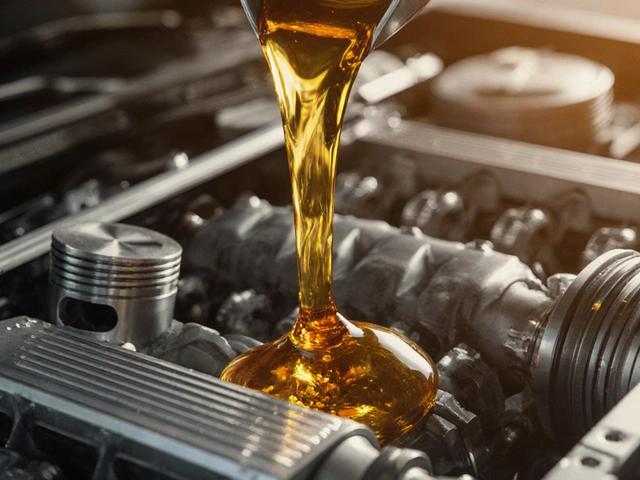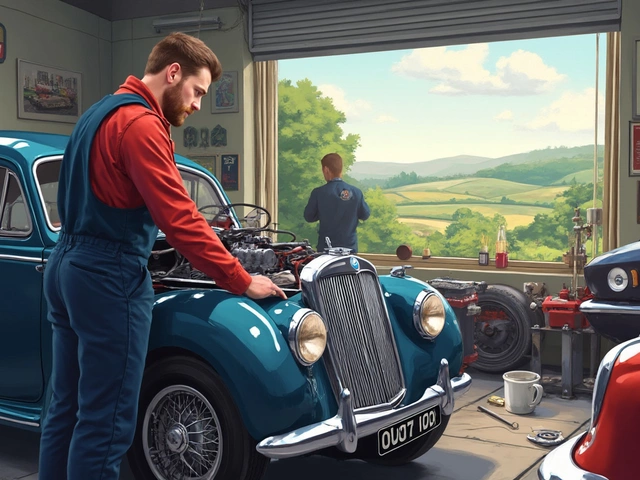Car Suspension Noises – Quick Guide to Identify & Fix Them
If you hear clunks, squeaks, or rattles while driving, your suspension is probably trying to tell you something. Ignoring these sounds can lead to uneven tyre wear, poor handling, or even a safety issue. The good news? Most suspension noises are fixable and don’t always require a complete overhaul. Below we break down the most common sounds, what they usually mean, and the steps you can take to get back to a smooth ride.
Common Suspension Sounds and What They Tell You
Clunking or knocking: You’ll feel a sharp thump when you go over bumps or during hard cornering. This often points to worn out ball joints, loose control arm bushings, or a broken sway bar link. The noise is usually louder on one side and may feel like the car is shifting weight suddenly.
Squeaking or squealing: A high‑pitched squeal is usually a sign of dry or damaged shock absorbers, struts, or sway bar bushings. Moisture or old rubber can cause the squeak, and it often gets worse after a rainstorm or when the car sits for a while.
Rattling: A loose rattling noise that changes with speed suggests a problem with the suspension mounts, subframe bolts, or the exhaust hanging near the suspension. It can also be a sign of a cracked coil spring hitting the shock absorber.
Grinding: If you hear a metal‑on‑metal grinding, it’s time to stop driving and get it checked. This could be a broken strut mount, a seized bearing, or a damaged differential that’s connected to the suspension.
Steps to Diagnose and Repair Noisy Suspension
First, do a quick visual check. Park on level ground, pop the hood, and look for cracked or leaking shock absorbers, broken springs, or loose bolts. Give the wheels a firm shake – if they wobble, you likely have worn tie‑rod ends or ball joints.
Next, listen while the car is moving. Drive at a low speed over a smooth road, then over a small bump. Note when the noise occurs – during braking, turning, or just cruising. Matching the noise to a specific action helps narrow down the culprit.
If you suspect a specific part, try a simple test. For squeaky shocks, spray a little lubricant on the shock shaft and listen again. If the squeak stops, you’ve found the source. For clunks, check the tightness of the sway bar links with a wrench – a loose nut will produce the same sound.
When you’ve identified the part, replace it with a quality component. Most local garages can swap out worn shocks, struts, or bushings in a couple of hours. If you’re handy, replace ball joints or control arm bushings yourself, but remember to torque bolts to the manufacturer’s specification.
Finally, after any repair, take the car for a short test drive. Pay attention to how the car feels – should be steadier, with less noise and improved handling. If the noise persists, it might be a deeper issue like frame damage, and you’ll need a professional inspection.
Keeping an ear out for suspension noises can save you from costly repairs down the line. Regular checks, timely lubrication, and prompt part replacement keep your ride safe and comfortable. If you ever feel unsure, a quick visit to Northwich Tyres Centre will get you expert advice and the right parts to fix the problem without breaking the bank.
 16 January 2025
16 January 2025
Identifying Noises from Faulty Car Suspension: What to Listen For
When driving, an unusual noise can be a telltale sign of suspension problems in your vehicle. Understanding the specific noise that bad suspension might make, and knowing how to identify it, could save you both time and money. From clunks to squeaks, the sounds can vary greatly depending on the issue. In this article, we explore the types of noises associated with suspension issues, what each might signal, and how you can address them effectively.






0